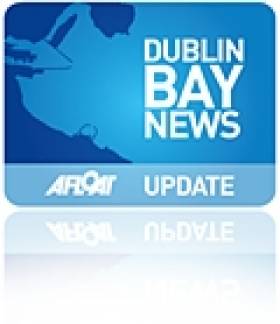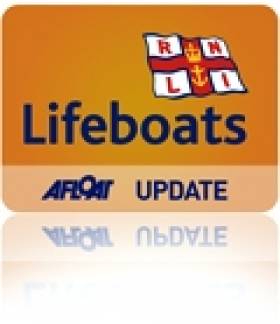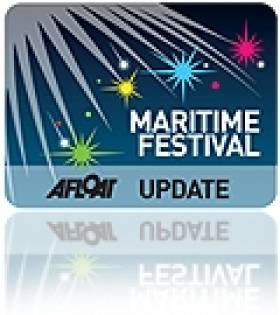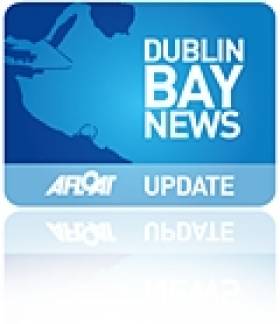Displaying items by tag: Dun Laoghaire
Beneteau Yachts Fill ISORA Top Slots in Offshore Race from Dun Laoghaire to Tailor's Rock
#isora – Three different Beneteau models filled the top three places in ISORA's 35–mile offshore day race on Saturday. The light air race from Dún Laoghaire to Tailor's Rock, Loughshinny and back off Dublin's East coast was won by the Beneteau First 40.7 Tsunami skippered by ISORA commodore Peter Ryan of the National Yacht Club. Second in the 13–boat fleet was the Royal Irish Yacht Club's Mermaid IV, a Beneteau First 50. Third was First of September, a First 43.5. Full results available to download below as a png file.
The next ISORA race is the KONA offshore Race from Dún Laoghaire to Pwllheli on 26th July. This is also the feeder race for the IRC Welsh Nationals on 1st to 3rd August.
Additional report by Peter Ryan, ISORA
With many of the ISORA regulars recovering after the recent Round Ireland race and also taking part in Cork Week, 13 of the 15 entries came to the start line at Pier Mark for the ISORA Lighthouse Day Race.
The forecast for the day was light winds from the south strengthening around midday and reducing again in the evening and veering west. The original plan for the course was to round or pass the main lighthouses around Dublin – Baily, Rockabill, Kish, Muglins and Dun Laoghaire lighthouses. This would have produced a course of 45 miles. When the course was being decided just prior to the pre-race briefing, Dublin Bay was like a mill pond with little or no wind. Another factor in deciding the course was the strong tides on the day – HW at 12.20.
The Sailing Committee set the course to give a shortened race of 35 miles using Tailors Rock Cardinal just north west of Lambay instead of Rockabill. The course was:
Baily (P) – Tailors Rock (S) – Kish (S) – Muglins (S) – Finish at Dun Laoghaire – (35 miles)
Commodore of the NYC, Larry Power, sent the fleet of 13 boats off under spinnaker in 10 knots of wind towards Baily Lighthouse at 10.00. The wind was as per the forecast, from the south giving a dead run to Tailors Rock. The fleet was lead past Baily lighthouse by "Mermaid IV" with "Tsunami", "First of September" and "Adelie" in close contact. As the fleet passed by Ireland's Eye and Howth the winds became fickle with a slightly steadier wind seeming to exist out to sea.
As the fleet approached Tailors Rock, "Mermaid IV" was the first to round. As a celebration of their rounding they sent one of their crew up to the top of the mast, probably looking to find more wind!!!! This event was photographed and the picture is similar to the famous "Hugo Boss" photograph of the mast walker.
At this stage the entire fleet were well bunched and the race was there for anyone to take. ISORA debutante "Hypermene" a Mini Transat 6.5 was expected to dominate the race but Skipper, Graham Barker, had gear difficulties and was unable to live up to expectations in this race.
The leg to Kish was a beat and the leading boats "Mermaid IV" and "Tsunami" extended their lead ahead of the following fleet. The winds had started to strengthen as forecast and varied from 12-15 knots from the south.
The leg to the Muglins was a tight reach and by that time "Mermaid IV" was well clear of "Tsunami". However, the "Dalkey Island Curse" was present to stop the progress of "Mermaid IV". She passed the Muglins and appeared to sail into the "hole" and then made little progress against the strong south going tide at the rock. The wind also backed to south east and reduced producing another dead run to the finish. "Mermaid IV" opting for the line close to the land to avoid the tide, found only fickle winds. "Tsunami" approaching the Muglins observed the difficulties "Mermaid IV" was having and gybed immediately out towards Baily and steadier winds but stronger tide after rounding Muglins. This move paid off for "Tsunami".
This was not the end of the problems for the leading boats and the following fleet. A "hole" had also formed around the finish area at the pier heads and what winds were there veered and backed continuously. The bad luck had not ended for "Mermaid IV" who parked in front of the finish line for several minutes before crossing and taking line honours. "Tsunami" who benefitted from "Mermaid's" experiences crossed the line very shortly after in a filling breeze taking Overall and Class 1. "First of September" took Class 2 and "Big Deal" took Silver Class. The last boat crossed the finish line at 17.22 after a very pleasant race.
The usual "Apres Sail" took place in the NYC.
The next race is the KONA Dun Laoghaire to Pwllheli Race on the 24th July. This is the feeder race to the Welsh IRC Nationals in Pwllheli from 1st -3rd August. The sponsors of the race KONA are providing the perpetual KONA Offshore Trophy for the winner of the race and the winner also receives a replica of the trophy to keep. The Royal Dee Yacht Club have also provided a trophy, "The Tidal Cup" for the winner of the feeder race.
It is hoped that as many of the ISORA boats take part in the Welsh Nationals. KONA will be providing a crew bus back to Holyhead to take those participants in the KONA feeder race and who are leaving their boats in Pwllheli for the IRC Nationals. A crew bus will also be provided to take those same crew back to Pwllheli on the following Thursday evening for the IRC event. The KONA prize giving for the feeder race will take place on the Thursday evening of the IRC Nationals when the crew bus from Holyhead arrives. A reception is also being provided for those who took part in the feeder race.
I hope to see all the ISORA boats supporting PSC for the IRC Nationals. This promises to be a great racing and social event.
The Optimist Dinghy's Good News Story Sails Into Dublin Bay
#OppiEuros2014 – This weekend sees a truly international sailing event taking shape in Dun Laoghaire, with the Optimist European Open Championship attracting 250 young sailors from 44 nations (32 European, 12 others). They will take to the waters of Dublin Bay in a little boat which is one of the key strands in the fabric of world sailing. W M Nixon takes a look at the Opty back-story, and outlines the front runners in the Euros and the home team.
Once upon a time, there was an American magazine called The Saturday Evening Post, which lived up to its name by arriving in millions of households across America in the last postal delivery of each week. It provided a focus for family life with its homely mixture of entertaining, informative and educational articles. And as it was the most widely circulated weekly in America, it had the resources to employ talented artists who each week evocatively illustrated the very best of American life with a strong family slant.
But it's a long time now since the demand for post and printed material were such that a publication of this quality could be a viable proposition. The Saturday Evening Post ceased to be a weekly in 1963, and for a while was reduced to a quarterly. These days, it is published six times a year as an exercise in nostalgia by The Saturday Evening Post Society. But while it may now only be a shadow of its former self, the weekly illustrations produced at its height by its team of artists have endured as highly-regarded works of art in themselves. And nothing more perfectly captured the essence of American home and small town life at its very best than the paintings of Norman Rockwell who, in a 50 year career with the magazine, created more than 300 of The Saturday Evening Post's distinctive covers. It was popular art at its very best.
Yet even an all-embracing magazine of this calibre could not cover every good news story going on in America during its glory years from 1920 to 1960, and there were some gems which escaped Rockwell's technically brilliant attention. So if there's ever a competition to create The Greatest Norman Rockwell Picture Never Painted, let us suggest that "Building The First Optimist Dinghy in Clearwater, Florida" should be right up there for consideration. Indeed, as the International Optimist Dinghy Association is such a thriving, prosperous and global body, I'd suggest they commission it themselves, as doing so would create a neat story in itself.
"Neat" is the word which most often comes up in talk of the Optimist, and of course in America it carries wider connotations than the simpler European notion of tidiness. At just 8ft long, the little sailing pram is neat but deceptively simple, and the people who brought it into being in Florida in August 1947 were quiet geniuses who did much good work mostly by stealth, but knew when to beat a drum when it suited their cause.
It started with a recently returned World War II veteran, Major Clifford A McKay, noting that while his son Clifford Jnr aged 12 much enjoyed the landbound wheeled soapbox races for young people organized by the Clearwater Optimist Club (one of those classically American community groups like the Rotarians and the Lions), the boy's most strongly developing interest was sailing as a crew in the local Snipe dinghy class.
Back in 1947, even in Florida there wasn't the money to splash about on any sport in which your child showed an interest, so the Major got fired up with the notion of creating the cheapest possible sailing boat – a floating soapbox - that could get the local young people afloat in their own boats. His own interest in boats was purely for fishing, but he proved he could turn his inventive mind to anything, and he outlined his requirements to the local boatbuilder Clark Mills, who happened to be going through a quiet late summer period at his workshop.

Clark Mills (1915-2001), designer and builder of the first Optimist
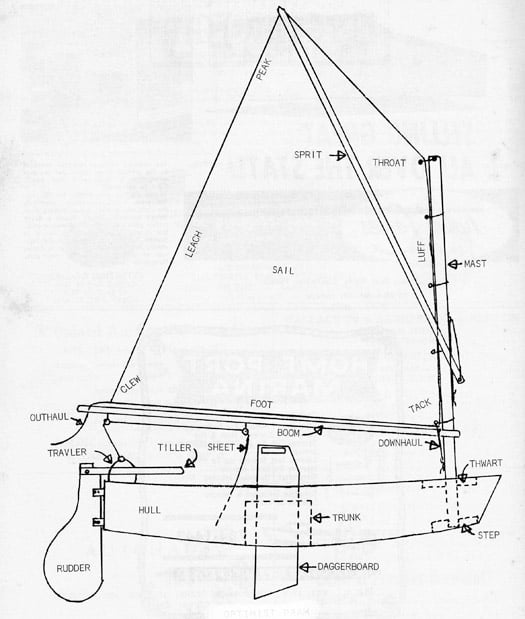
The first drawings for the Optimist – it was to be built with two sheets of 8 x 4 plywood
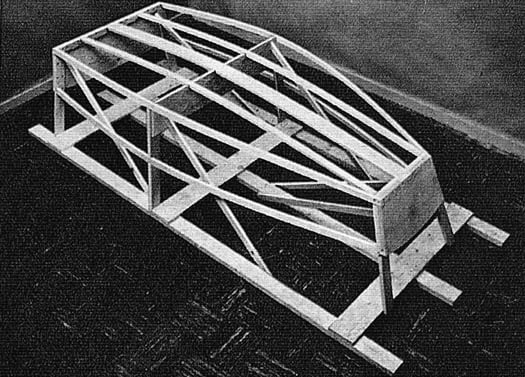
This framework was the mould on which the first Optimists were built by Clark Mills
Within a fortnight, Mills - the quintessential all-American can-do character – had created a bright red 8ft sailing pram, the dimensions dictated by the fact that it was to be made from two sheets of 8ft x 4ft ply, the rig dictated by the utter simplicity of a sprit setup, as they'd hoped to make the sail from a square bedsheet.
The bedsheet was the first notion to be scrapped – the local sailmaker and his wife were soon producing economy sails. But as for the basic design, it was a winner from the start. Yet even in his wildest dreams, young Clifford Mackay Jnr could never have thought, as he sailed that first able little prototype out on Clearwater Bay, that he was sailing a boat which would go on to become a cornerstone of global sailing.
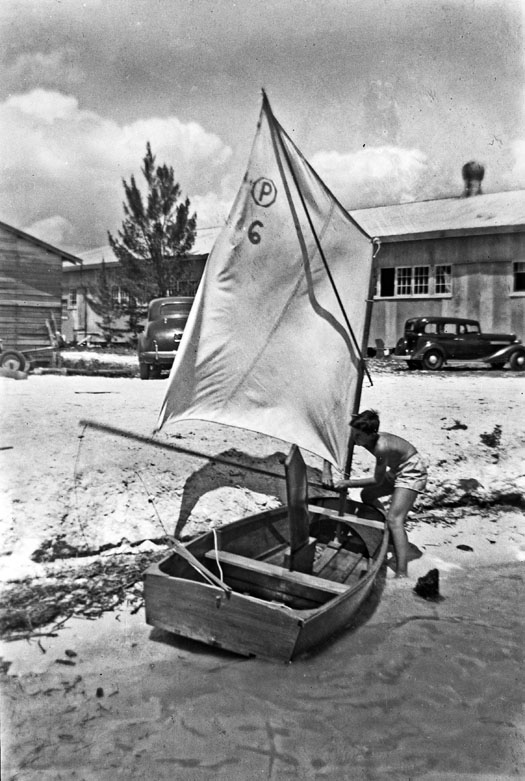
Young Clifford McKay with one of the first Optimists at Clearwater Bay, Florida in 1947
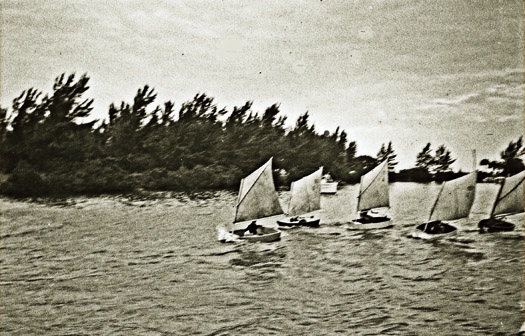
The fleet is racing....thanks to sponsorship from neighbourhood businesses in 1947, the Clearwater Optimist fleet was soon in action
Local needs came first. The class took off in Clearwater when Major McKay and his committee secured sponsorship from neighbourhood firms for the building of 28 boats. That it was all happening outside the stuffy constraints of established sailing became evident when the local paper reported an early series. It simply mentioned that the Optimist prams of the Clearwater Sun and WTAN Radio Station had tied on points. Blatant sponsorship and advertising were anathema to traditional yachting (even if Lipton and Jameson had boosted sakes of their tea and whiskey with sailing success), but the idea that the sponsor would be named but the helmsman ignored went way beyond the pale.
Be that as it may, it worked in getting the show on the road, and the Clark Mills Boat Works was soon churning out Optimists, while Major McKay was successfully promoting the idea throughout Florida. Reaching a wider public didn't dent the little boat's good image in any way - in fact, it enhanced it. Other builders were to find that building a competitive Optimist was in no way as easy as "Clarkie" Mills made it seem, and it was recalled that his Boat Works had produced some super-fast Snipes.
As for Mills himself, he had no doubt his interpretation of McKay's outline had produced something very special, and quipped: "I think I'm the best designer in the United States. I'm damned good. I've got the splinters and the backache to prove it....."
It might have been out of character for him to admit the profound satisfaction that the Optimist's success in opening up the world of boats had given him in his varied life from 1915 to 2001, but he couldn't suppress his love of sailing: "A boat, by God, it's just a gleamin' beautiful creation. And when you pull the sail up on a boat, you've got a little bit of somethin' God-given. Man, it goes bleetin' off like a bird wing, you know, and there's nothin' else like it."
There were other small boats becoming available which were broadly similer to the Optimist in concept, and in Ireland at Skerries local sailor Brian Malone, a naval architect with BIM (the Sea Fisheries Board) created a tiny children's sailing pram dinghy which he called the Measle, as every kid would have it sooner or later. But while the Measles had to be robustly built to cope with Irish conditions, by comparison the Optimists seemed light as a feather, and by the 1950s they were going international in an unexpected direction, having taken off big time in Scandinavia.
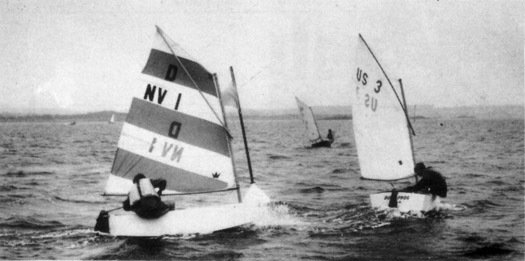
Rapid international expansion began when the Optimist became widely accepted in Scandinavia in the 1950s. By 1967-68, Peter Warren of Denmark (left) was twice world champion, using an Elvstrom sail.
That such a stronghold of classic yacht design should adopt the utilitarian little American boat speaks volumes for the Optimist's versatility, and the fact that at only 8ft, moving the boats around was not a major logistical challenge. Nevertheless some countries held out against the Opties' easy appeal. But by the early 1960s even the traditional strongholds in the south of England were sharing the momentum, and a regatta in the Hamble River in 1962 set the seal on the Optimist's British success, with the first fibreglass boats also starting to appear.

This regatta in the River Hamble in 1962 confirmed the Optimist's growing popularity in England
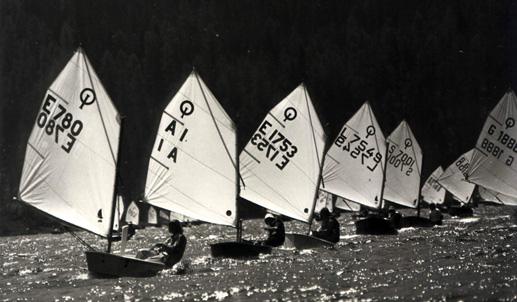
A mighty long way from a creek in Florida – a major Optimist championship under way at St Moritz in Switzerland
Today, practically every sailing family in the world goes through its Optimist phase while there are kids under the age of 15 in the lineup, with the prime years with national and international aspirations being 13-15. Thus the most intense Optimist individual window is only two to three years. In some families, the involvement can be almost total, while in others it's just a case of having an Optimist or two about the place.
We were in this situation for about twelve years in all, and it ended on something of a high with the youngest son showing his entrepreneurial skills by becoming a part-time Opty dealer long before he'd a driving licence. This meant his parents had to drive him to other sailing centres where the class was developing, and then stay in the background while he struck a deal with some nervous parent anxious to provide a hot boat for their demanding child. Major Clifford McKay and Clarkie Mills – you've a lot to answer for........
Ireland has punched way above her weight in Optimist involvement, and the development of the international association has seen key players such as Robert and Helen-Mary Wilkes of Howth, and Curly Morris of Larne, making dedicated input in order to keep the Optimist class relevant to the needs of modern sailing, while Robert Wilkes took time out to record the history of the class in a gem of a book which has provided much of the material for our look at the early years.
Adaptation and innovation have been central to the Optimist's continuing success. Thus although the convenient size of the little boat has been a bonus in times past, even at just 8ft long it is now becoming so expensive to move about internationally that one of the attractions of the Europeans at Dun Laoghaire will be the provision of a large charter fleet already on site.
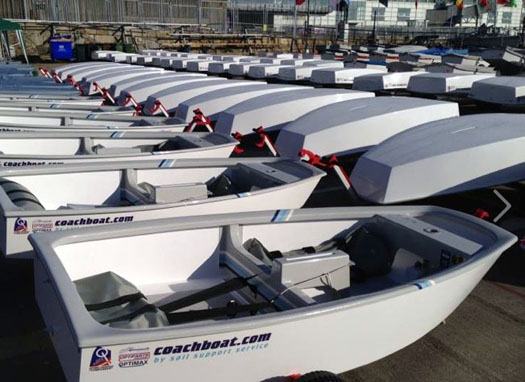
A glimpse of the future – the charter boats which will be used at Dun Laoghaire by a significant number of young sailors
As for the site, Dun Laoghaire has enthusiastically woken up to the fact that it can provide the kind of club and accommodation package which topline modern events expect. The Royal St George Yacht Club is the host, while the Royal Marine and Kingston Hotels have combined forces to provide what is in effect an Olympic village.
If you want the ultimate measure of the Optimist's central role in sailing, it's worth noting that six of the female European Olympic dinghy medallists in London 2012 had participated in Optimist European Championships, the male "graduates" included triple Olympic medalist Iain Percy, and worldwide you'll find that top people in sailing in many different areas of the sport are more than happy to remember their Opty days - it's just part of what our sport is all about.
In the coming days, it's the defending girls' champion, Maria Turin of Slovenia, who'll be the main focus of attention, for if she succeeds, it will make it three in a row. As for the boys, Tytus Butowski of Poland is the defending champion.
So far, Ireland's best result came in 1992 when Laura Dillon of Howth was fourth, while in 2011 Peter McCann (Royal Cork) placed 5th. Like youth itself, there's something essentially ephemeral about top level Optimist racing, but for the year or three that's in it, Ireland's lineup for 2014 is: Sarah Cudmore (Royal Cork), Dara Donnelly (National YC), Gemma McDowell (Malahide YC), Grace O'Beirne (Royal St George YC), Clare Gorman (National YC), Harry Bell (Royal North of Ireland YC), Alex Buckley (Skerries SC), Michael Carroll (Kinsale YC), Loghlen Rickard (National YC), James McCann (RCYC), Alex O'Grady (Howth YC), Daniel Hopkins (HYC), Jamie McMahon (HYC) and Peter Fagan (SSC).
#windsurf – The five-mast Wind Surf cruise yacht will dock at Dun Laoghaire Harbour at 7am on Saturday, 12th July. It will remain docked at the south Dubllin Bay port until 6.30pm when it will depart to the Isle of Man. It also visited Dublin Bay on Wednesday emerging from Dublin Port under sail.
The Wind Surf is the largest ship in the Windstar Cruises fleet and is known for its luxurious amenities carrying 312 guests and 191 international staff. The Wind Surf, one part sailing yacht and one part upscale cruise ship, has seven triangular, self-furling, computer operated sails.
'Wind Surf' arrives in DL pic.twitter.com/B4aa2rv0tv
— Gareth (@garethoconnor) July 12, 2014
#dlharbour – The Minister for Transport, Tourism and Sport, Leo Varadkar TD, has announced the appointment of Don McManus to the Board of Dun Laoghaire Harbour Company.
Don McManus – who is Chairperson of Dun Laoghaire Business Improvement District (BID) – has previously served terms on the board of the Harbour Company. Don is from Dun Laoghaire, and is Managing Director of his family-owned business which has operated in Dun Laoghaire since 1928.
The Board of Dún Laoghaire Harbour Company now comprises eight members, which is the maximum membership it can have.
Speaking on the appointments, Chairperson of Dún Laoghaire Harbour Company, Eithne Scott Lennon said: "Don's experience and commitment to improving the Dun Laoghaire is very important, and will be very valuable to the Harbour Company as we continue to expedite the elements of our development plan."
The development plan include the delivery of an International Diaspora Centre, a deep cruise berth facility and a new mixed use housing and retail development. A number of initiatives to add to the leisure offerings at the Harbour have already been instigated, including the Urban Beach project, the Shackleton Exhibition and the new drive-in movie initiative which will commence later this month. A key area of development for the Harbour Company has been the increase in cruise-calls to Dún Laoghaire in recent years, and we expect to deliver 100,000 leisure visitors and crew to Dún Laoghaire and its hinterland in 2015.
#rsgyc – What was expected to be a bumper entry of 180–boats for the Frank Keane BMW Royal St.George Yacht Club Regatta on Saturday ended up breaking the 200 boats mark, leading club officers to declare it the biggest entry in the club's 176–year history. What's more, the event also took in a dedicated White Sails Challenge, a new novice try boating initiative plus some exotic new sportsboats and dinghies within its fleets.
In total, there were 28 classes racing producing a combined fleet of 202 boats. Full results for each fleet are downloadable below as html files.
The Royal St. George Yacht Club's own Boomerang, a Beneteau First 36.7 sailed by the Kirwan Family, were winners in both IRC and ECHO handicap of Cruisers one, one of the biggest IRC classes with 11 boats.
In the dinghy classes, a brand new Irish Moth design sailed by John Chambers finished joint third in the foiling class that was won by Rory Fitzpatrick.
#RNLI - After a series of 999 emergency calls reporting an object crashing into the sea off Bray, Co Wicklow yesterday evening (29 June), a brief search by the volunteer RNLI lifeboat crew from Dun Laoghaire discovered a giant Mickey Mouse balloon on the water.
Several callers to the Irish Coast Guard's Marine Rescue Co-ordination Centre in Dublin reported an object crashing into the water 1km off the Bray seafront.
Several paragliders had been operating in the area recently, and there were fears that the object might have been one of these in difficulty.
Arriving on scene, the all-weather lifeboat crew of seven recovered a large inflatable Mickey Mouse balloon that had fallen into the sea and was being carried by the light breeze and flood tide towards the cliffs at Shanganagh.
"We're happy that this was a call made with good intent and calling 999 and asking for coast rescue is always the best course of action," said Stephen Wynne, lifeboat operations manager at Dun Laoghaire.
"And in this case, we were particularly happy to assist Mickey Mouse, one of the all-time favourite cartoon characters."
National Yacht Club (NYC) 2014 Regatta Results
#nyc – The National Yacht Club's J109 Something Else (John Hall) was the IRC class one winner of today's National Yacht Club Jelly Bean sponsored regatta on Dublin Bay. Official results sheets for all classes are downloadable below in powerpoint format.
The NYC boat skipper beat club mate Ruth, a sistership skippered by Liam Shanahan. Third was Royal Irish XP–33 yacht Bon Exemple (Colin Byrne) in the 13–boat fleet.
25 different classes were racing in the biennial event, a highpoint of the Dublin sailing season.
In the Flying Fifteen one design keelboat class, one of the most popular of the National Yacht Club fleets, the event was won by past national champions David Gorman and Chris Doorly in new boat, Betty.
Official results sheets for all classes are downloadable below in powerpoint format.
Dun Laoghaire's In Bloom For James Joyce Celebrations
#Festivals - A host of events are lined up in Dun Laoghaire to celebrate Bloomsday leading up to the day itself next Monday 16 June.
Three days of Bloomsday Breakfasts begin on Saturday 14 June, but the fun lasts all day with music by Jhil Quinn’s Cafe Vaudeville Band, giant street games like Jenga and chess, and a vintage carousel at the waterfront.
The weekend will also feature readings from James Joyce's Ulysses by professional actors throughout Dun Laoghaire, as well as walking tours taking visitors around some of the sites frequented by the author and mentioned in his most famous work.
One of these is the famed James Joyce Tower in Sandycove, which will be connected with Dun Laoghaire town centre and Glasthule village and the renowned Teddy's Ice Cream shop by a free vintage shuttle bus.
The Joyce Tower itself is hosting a range of events from this Thursday 12 June, which will see a performance of Molly Bloom's soliloquy, while the Saturday will see free guided tours of the tower and museum in Joycean dress.
And what's more, all of these festivities will be happening against the backdrop of the ICRA Nationals at the Royal Irish Yacht Club on Sunday.
#dlharbour – Gerry Dunne, Chief Executive of Dún Laoghaire Harbour Company responds to WM Nixon's article Has Dún Laoghaire Lost the Plot?
Mr. Nixon and the Harbour Company share one thing in common – a passion for Dún Laoghaire Harbour. It is a unique amenity for the people of Dún Laoghaire, for the City and County of Dublin and for the nation. Since its construction almost 200 years ago, it has served and continues to serve an evolving community of interests. First came the ferry boats and freighters, followed by the railway. Then came the sailors and the yacht clubs. Various businesses have come and gone. And at all times, the people have come.
Sustainable development
We in the Harbour Company have a vision for the sustainable development of Dún Laoghaire Harbour in conjunction with the revitalisation of the town. We have been working assiduously towards this objective. Minister Varadkar's Port Strategy of March 2013 puts it lucidly when it states that the long term future of the Harbour will be in terms of marine leisure, maritime tourism, cultural amenity and urban redevelopment.
It is against this backdrop that I address two points raised by W.M. Nixon regarding Masterplan proposals:
- the urban beach
- the new cruise berth.
Mr. Nixon's concerns regarding the urban beach are twofold – disruption during the construction phase and effect on access when constructed. On these issues, expert advice available to the Harbour Company indicates that there is likely to be very little disruption during construction. As for access, since this project was first proposed in the Masterplan, the design of the urban beach has been expressly modified in order to ensure there will be no access issues for members of the National Yacht Club and, most importantly, the RNLI.
Beating heart
The sailing community is, and will always remain, a key stakeholder in Dún Laoghaire Harbour. Sailing is the beating heart of Dún Laoghaire Harbour. As Mr Nixon knows, the Harbour Company works closely with the yacht clubs to attract major international sailing events to the harbour. It would frustrate our objectives if any of the proposed Masterplan developments were to make the harbour a less attractive location for sailing and sailors. In fact, a working group has been convened with the sailing community and the Harbour Company with the overall strategic objective of attracting major international sailing events and associated festivals to Dún Laoghaire.
This season (2014), swing moorings in the west Bight were eliminated and the swing moorings in the East Bight were reduced by 40% . This initiative was referenced in the Harbour Masterplan and implemented with the co-operation of the yacht clubs, with the objective of creating a substantial quantum of waterspace in the safe environment of the harbour for youth training and in-harbour sailing.
When preparing this article, I took time to read the newspaper reports from the 1990s about the then proposed marina and the many objections that were raised to its construction. One of the points raised in the the objections to the marina was the encroachment on in-harbour sailing and training and possible safety issues. Mention of the marina is instructive as it illustrates that a development that might originally have been viewed sceptically by some can turn out to be something that becomes much-loved and emblematic of the harbour.
The cruise business is a growing market sector in the tourism industry. Ireland has recently begun to capitalise on this market and has succeeded in attracting a growing number of visits by cruise liners. Dún Laoghaire has been important to attracting these cruise calls, and in 2015, over 100,000 passengers/crew will visit the town as part of their cruise tour. Interestingly, the number of cruise calls to Ireland represents a relatively small share of this potential market, and there is a clear opportunity to grow this business very significantly for the benefit of the Irish economy. The harbour offers stunning views of Dublin Bay, Killiney Hill, the town itself and, in the distance, the Dublin and Wicklow Mountains.
Many commentators agree that this location offers a far more attractive destination for cruise passengers than the industrial environment of Dublin Port.
Mr. Nixon questioned the economic benefit to the town of the leisure cruise business. Importantly, businesses in the town are enthusiastic supporters of this initiative, through the Dún Laoghaire Cruise Stakeholder Group. A detailed report, conducted by independent economic consultants in 2011, estimated that a new cruise facility would bring significant benefit to the area, with over 30% of the economic value of the cruise visits impacting directly on Dún Laoghaire.
The Dún Laoghaire Harbour Masterplan was adopted in October 2011 following an extensive consultation process with the public and key stakeholders. The Masterplan sets out a long-term vision for Dún Laoghaire Harbour. It seeks to realise the potential of the Harbour as a major marine, leisure, cultural and tourism destination, as well as securing its long-term economic viability. It does this in line with the Government's ports policy.It is in the implementation of this policy that Dún Laoghaire Harbour can be developed and reach its full potential as a leisure port facility. We have a wonderful asset, an unparalleled asset, an asset with a unique history. It is the opinion of many that it truly is one of the most beautiful man-made harbour in the world. It offers a striking blend of modern amenities, mixed with a traditional marine ambience.
One can be nostalgic for the time when the town with its harbour "was known as Kingstown and had its origins in the heights of gentility and middle class refinement". However, while seeking to preserve the unique character of the harbour that has made it such an attractive place to visit or in which to sail, Dún Laoghaire Harbour must adapt to survive. Sailing may be the beating heart of the harbour, but a heart does not beat by itself. There must be due regard for the needs of all harbour users including the general public. A core objective of the Masterplan is to increase public access to the waterfront.
Economic realities
There is a significant annual cost to the maintenance and development of a wonderful asset such as Dún Laoghaire Harbour. The stakeholders and the general public expect to see a harbour full of vitality, in pristine condition, with first class facilities and properly maintained. Dún Laoghaire Harbour Company works constantly to seek to meet these aspirations. What might not be well known is that the yacht clubs make only a very nominal contribution to the cost of continuous maintenance and repair work for this almost-200 year old man-made facility. As the Government has made it clear that it will provide no funds for maintenance or development of the harbour, the Company must rely on commercial opportunities to provide the resources necessary to ensure that the harbour meets the expectations of all users. Without commercial income, such as income from cruise calls, we would simply not be in a position to maintain the high standards which all harbour users have come to expect.
Cultural significance
Apart from the development of the proposed cruise facility and the urban beach, the Harbour Masterplan has identified other exciting plans, including the delivery of an International Diaspora Centre. The plans for this Centre take account of the historical significance of the harbour over almost two centuries in the movement of millions of migrants between Britain and Ireland. The proposed Centre will offer visitors from at home and abroad a world-class visitor experience and will have the potential to put Dún Laoghaire on the global map as a top visitor destination.
The Directors and staff of the Harbour Company take our role as custodians of the harbour very seriously. Our first responsibility is to make sure that the harbour is well run and economically viable. Our commitment must be to all those who use the harbour – sailors, yacht club members, anglers, ferry passengers, cruise passengers, tourists, local residents, occasional visitors, regular walkers and, not least, the general public.
The coming months and years represent a hugely exciting opportunity for the Harbour, and for the town of Dún Laoghaire. In embracing this opportunity, the Harbour Company will always remain cognisant of the history, heritage and potential of this wonderful place.
#isora – A former steel hulled BT Global Challenge yacht was the winner of a 'punishing' second ISORA offshore race from Holyhead to Dun Laoghaire on Saturday morning. The 15–boat fleet faced a fetch into 30 plus knots of wind that veered to produce a beat at the end of the 60–miler as the boats apporached the Dublin coastline. See results for download below as a jpeg file.
Conor Fogarty's entry SY 2041' made the best of the Irish Sea's harsh conditions, another good preparation race for next month's 700–mile Round Ireland race.
One great ISORA racer and supporter lost its mast on Friday night, just north of Holyhead when heading for the race start area. The Isle of Man based Sigma 33, Polished Manx skippered by Kuba Szymanski ended up being towed to Holyhead by the RNLI.
Holyhead's all weather Severn class RNLI lifeboat launched to the 33ft–yacht dismasted in a force seven gale at 2.20am, according to RNLI sources.
The ISORA entry had got into difficulties eight miles out when its mast broke leaving the vessel 'helpless in huge seas' off the Skerries light. The coxswain asked if the yacht crew were able to cut free the rig as weather conditions made it hazardous to pass lifeboat crew to assist in the big sea swell. This was done and the lifeboat escorted Polished Manx under her own power to Holyhead marina, a journey of some six hours. Holyhead coastguard co-orientated the callout.
Szymanski, who has raced thousands of miles including last year's D2D and Fastnet races, has made contact with ISORA commodore Peter Ryan to say he aims to be back on the startline with a new mast for the next ISORA on May 24th. 'If it can be done, he is the man to do it', says Ryan.
ISORA Race 2 (Holyhead to Dun Laoghaire) Report by Peter Ryan:
As with Race 1, the weather was not kind to ISORA competitors. Strong and gusty conditions all the previous week with DBSC cancelling their Thursday racing did not encourage those skippers who were considering taking part in the race from Holyhead to Dun Laoghaire. Although a window of opportunity arose for boats delivering on Friday only 15 boats came to the line at 08.30 on Saturday 10th May. The usual start time was delayed due to shipping movements.
As the boats left Holyhead marina and made their way in the strong and gusty southerly winds to the start line between the pier head an Clipera bouy, they were met by the ominous sight of one of our fellow competitor Kuba Szymanski's "Polished Manx", with no rig, being escorted by Holyhead lifeboat towards the marina. Thankfully all were safe aboard.
There was concern about the weather forecast for the race when the Sailing Committee met on Friday evening at the pre-race soiree in Holyhead sailing Club. After the usual consideration and consultation there was unanimous agreement to make the race as short as possible – from the start direct to the finish.
The forecast for the race was for Force 6-7 south west veering west later and decreasing towards the Irish coast. Some parts of that forecast were incorrect – the wind only moderated for a time and it touched at Gale 8 several times. The race started with a southerly Force 7 and soon most boats had reefed down for the weather. Holyhead boat "Pipedreamer" did not start as they tore their mainsail while putting it up.
Things did not appear too bad as the fleet left the line and headed west towards Dun Loaghaire. Anyway, not until they reached the overfalls and out of the lee of the North Stack!!! Luckily the wind was from the south and allowed most boats to avoid most waves as they broke around them.
Quickly into the lead were the "big boats" "2041" the Challenge 67, "Mermaid IV" Beneteau First 50 and Andrew Hall's J125, "Jackknife". It was the Past ISORA Chairman's first race since retiring from offshore several years ago. Very soon the fleet split into three groups – the "big boats", the three J109's and Adelie and the rest.
Many boats took a southerly course to prepare for the veering wind. However the wind, that varied in strength from 18 to 34 knots, did not appear to have read the forecast. When the boats were only 20 miles off Dun Laoghaire there was no sign of the westerly wind. Most boats then took a more northerly course toward the finish.
Then as the leaders approached the Kish bank, the squalls appeared and with them driving rain and veering winds, resulting in a beat for the last 15 miles to the finish for most boats.
There was close racing is all the groups. At the front, "Jackknife" just squeezed over the finish line for line honours with only 90 seconds separating them from "2041". The J109's had a close match all during the race with positions being changed between them several times. The three J109's "Ruth", "Mojito" and "Sgrech" were never more than a few hundred metres apart at any time. When they were forced to beat towards the end of the race, there was separation. "Ruth" managed to nose 60 seconds ahead of her level rated opponent "Sgrech" as they crossed the finish line. "Mojito" finished 90 seconds behind "Sgrech"
"2041" took the Overall and Class1 win while "Adelie" took Class 2. "Yahtzee" took the Silver Class.
The tired, wet and battered crew made their way back to the National Yacht Club for the usual "après sail" and the regular discussion about "Why in God's name do we race offshore???"
Those crew off boats who did not compete, followed the race using the AIS trackers. Facebook commentary on the progress of the race was provided by, past two handed and currently one-handed offshore sailor, Liam "Lula Belle" Coyne and also by Andrew "Jedi" Sarratt. The commentary demonstrated the potential effect of the tracking for the general public interest in the offshore racing. Only four boats managed to successfully use the "Predictwind" tracker. As the tracking is becoming a huge part of the offshore racing scene. A big push will be made to get more boats "activated" for the next race.
The next race takes place on the 24th May and acts as a feeder to get boats some of the way towards Liverpool for the Liverpool – IOM – Dun Laoghaire weekend on the first weekend in June.


























